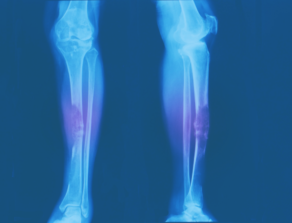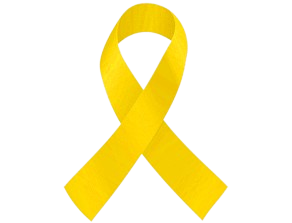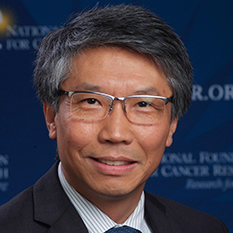Sarcoma
About Sarcoma
Sarcomas are cancers that start in bones, muscles, connective tissues, blood vessels or fat, and can be found anywhere in the body. There are more than 50 different types of sarcoma, which fall into two main categories: bone cancers and soft tissue cancers.
Sarcoma Key Facts
- An estimated 13,590 new cases of soft tissue sarcomas and 3,970 new cases of bone cancers will be diagnosed in the U.S. in 2024, with around 7,250 deaths expected to result from the diagnosis.
- Sarcomas are rare in adults and make up approximately 1% of all adult cancer diagnoses.
- Sarcomas are relatively more common among children. Between 1,500 and 1,700 children are diagnosed with bone or soft tissue sarcoma in the U.S. each year. This makes up about 15% of cancers in children under the age of 20.
- The overall relative five-year survival rate for people with soft tissue sarcoma is around 65% and for people with bone cancer, the overall relative five-year survival rate is 70%. The rate differs depending on the type of soft tissue and bone cancer.
- When the sarcoma starts in an arm or leg, the five-year survival rates are slightly higher for each stage when compared with sarcoma that starts in other locations.
Source: American Cancer Society’s Cancer Facts & Figures 2024; Sarcoma Alliance; and American Society of Clinical Oncology’s Cancer.Net

Prevention Tips for Soft Tissue Sarcoma
At this time, there is no known way to prevent most cases, primarily because many cases develop in individuals without clear risk factors. However, there are some measures considered that may potentially reduce the risk:
- Be aware of the genetic factors and get early testing
- Avoid radiation exposure
- Avoid chemical exposure
Resource: Soft Tissue Sarcoma Prevention | Stanford Health Care
Prevention Tips for Bone Cancer
Most known risk factors for bone cancer (such as age and certain bone diseases and inherited conditions) cannot be changed. Other than exposure to radiation (usually during radiation therapy), there are no known lifestyle-related or environmental causes of bone cancer, so at this time, there is no way to protect against most of these cancers.
Resource: Can Bone Cancer Be Prevented? | Bone Cancer Prevention | American Cancer Society
A symptom is a change in the body that a person can see and/or feel. If you have any of the symptoms below, it does not mean you have cancer but you should see your doctor or health care professional so that the cause can be found and treated, if needed.
Soft Tissue Sarcoma
- A lump that is increasing in size or becomes painful
- A lump of any size that is located deep within a muscle
- Abdominal pain that’s getting worse
- Blood in your stool or vomit
- Black, tarry stools
Bone Cancer
- Bone pain that becomes constant over time and worsens with activity.
- Swelling near pain area that happens later; may feel lump depending on location
- Neck bone cancers may cause a lump in the throat; Difficulty swallowing or breathing.
- Bone cancer most of the time does not fracture; Feeling sudden bone pain after soreness for months may indicate a fracture.
- Cancer in spine bones can press on nerves, causing numbness, tingling, or weakness.
Source: American Cancer Society and Sarcoma Alliance 2024
Risk Factors for Soft Tissue Sarcoma
There are more than 50 different types of sarcoma cancers, and most sarcoma do not have known causes. However, there are risk factors considered that may raise a person’s risk of developing sarcoma.
- Previous radiation therapy
- Family cancer syndromes
- Neurofibromatosis
- Gardner syndrome
- Li-Fraumeni syndrome
- Retinoblastoma
- Werner syndrome
- Gorlin syndrome
- Tuberous sclerosis
- Lymphedema
- Exposure to chemicals
- Vinyl chloride monomer, which is used in making some types of plastics
- Dioxin
- Immune system problems
Resource:
Risk Factors for Soft Tissue Sarcomas | American Cancer Society
Sarcomas, Soft Tissue: Risk Factors | Cancer.Net
Risk Factors for Bone Cancer
Many bone cancers are not linked with any known risk factors and have no obvious cause. However, there are a few factors that might affect how cells in the bones become cancer cells or raise the risk of some types of bone cancers.
Chondrosarcoma
- Age – most occur in older adults
- Benign bone tumors
- Enchondroma, which can transform into chondrosarcoma
- Multiple exostoses, also known as multiple osteochondromas
Chordoma
Most chordomas do not have a known cause. However, a small number of chordomas seem to run in families (known as familial chordoma). Some rare cases of patients with tuberous sclerosis seem to have a high risk of chordoma during childhood
Other Risk Factors for Bone Cancer
- Paget disease of bone
- Previous radiation therapy
For more information, visit Risk Factors for Bone Cancer | American Cancer Society | American Cancer Society
NFCR-Supported Researchers Working on Sarcoma Cancer
Cesare Spadoni, Ph.D., M.B.A.
University of London
Wei Zhang, Ph.D.
Wake Forest Baptist Medical Center













